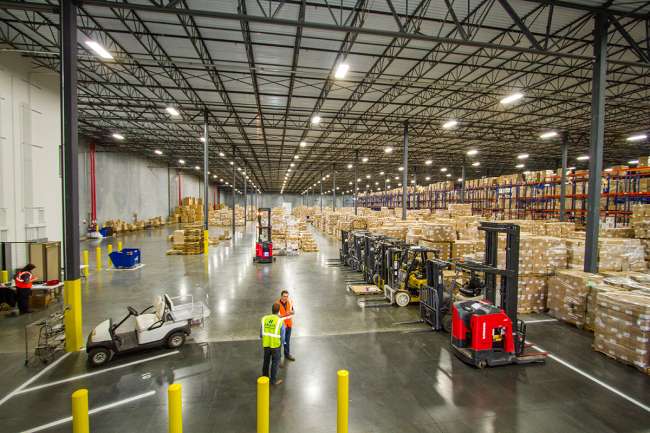How Logistics Firms Can Compete in the Age of Amazon

The global transportation services market was estimated at about $5.8 trillion last year, and there is much at stake for legacy freight forwarding, logistics and supply-chain management companies. There also is an increased pressure to respond to the boom in package deliveries with the rise in e-commerce spending.
SEE THE RANKINGS: 2018 Top 50 Global Freight Carriers
Leading retailers such as Amazon, Alibaba and Walmart have focused on building out their last-mile delivery and logistics services, but are increasingly going after the middle and first mile of the shipping chain to stay prepared for this significant increase in demand. The benefits from these process changes are far reaching.

Singh
To compete against the tech giants, automation is an attractive option for legacy logistics companies to reduce expenses.
Digital automation solutions and robotics process automation (RPA) are levers helping companies reduce costs, improve time to market, comply with regulations and provide accurate and fast information to customers on their freight. Through automation of manual data-entry processes, technology experts are helping to make the lives of both the logistics industry staff and consumers easier — from order placement to delivery.
One of the main issues hindering the transportation and logistics industry is the continued use of manual processes, which are still followed by a large percentage of U.S. businesses.
Analysis
Today, document and e-mail trails within a company can slow down processes and make them highly prone to error. Meanwhile, agile industry newcomers enter the scene without the burden of these increasingly outdated processes.
Organizations that weren’t born during the cloud-computing era often rely heavily on time-consuming manual processes. On a day-to-day basis, Excel sheets, Word documents and scanned images come into processing centers, which then need to update, index and organize this information for effective processing.
However, coupling intelligent character recognition (ICR) and robotics tools with data-management services can be a game-changing solution for traditional businesses taking steps to remain competitive.
Another significant challenge is retaining good talent while at the same time bringing in fresh insight and innovative thinking. With more lucrative and glamourous career options available, it’s hard to hire and retain skilled employees. Star performers do not want to get caught in mundane and repetitive tasks that drain creativity and do not justify the high labor rates commanded by such resources.
To tackle this issue, organizations should outsource or automate the repetitive and rule-based processes and set up global “vigil towers” that monitor freight movement and pre-empt issues before they happen. These vigil towers will provide 24/7 updates, elevating the customer experience and ensuring timely and accurate information is available across the supply chain.
In addition, analyzing the data points collected can help forecast and plan capacity and associated costs more effectively. Designing a solution that is finely tuned to the unique needs of an organization, while bringing forward best practices from other industries, is key to redefining the supply-chain industry.
On a related note, companies are also facing a growing expectation from consumers for timely updates and reconciling loads when it comes to parcel shipments — which is being driven largely by the “Amazon effect.” Because of this new standard, freight forwarders need to provide real-time status updates to customers for their shipments. These notifications need to be both quick and accurate. As a solution, organizations are partnering with companies that deliver track-and-trace services for logistics companies and freight forwarders enabling them to provide the latest and most accurate updates for their customers.
Meanwhile, due to ever-changing freight management regulations, it is common for organizations to struggle with compliance, which commonly results in the addition of resources to mitigate the resulting challenges. This not only adds up cost-wise, but also drains efficiency. As a solution, organizations can partner with business process management firms to integrate a scalable and robust model to manage work spikes and maintain committed service levels delivering accurate and high-quality processes.
As the logistics industry gears up for its busiest time of the year, the e-commerce sector is continuing to show strong growth and set new records. But as a result of this, logistics firms are under significant pressure. In response, they are taking steps to streamline their processes, deploy automation and explore innovative operating models to drive greater efficiencies.




